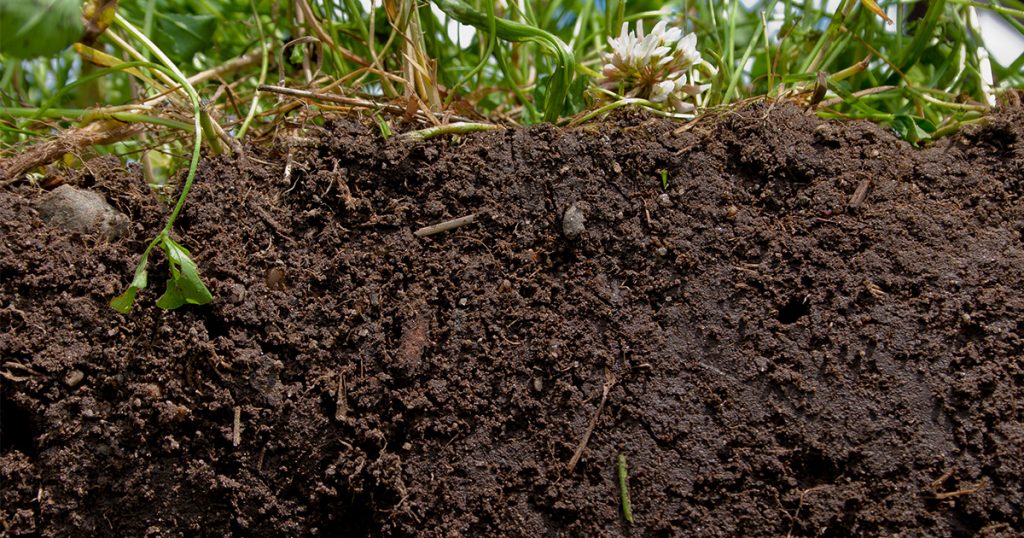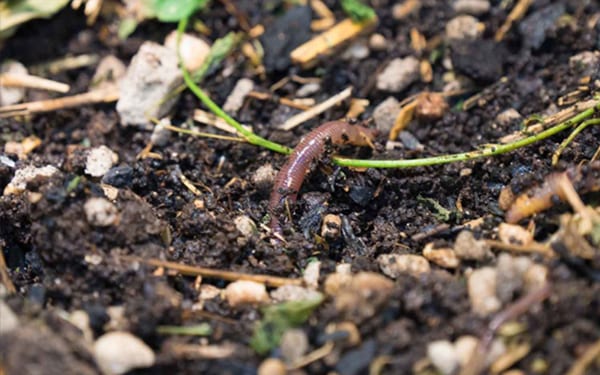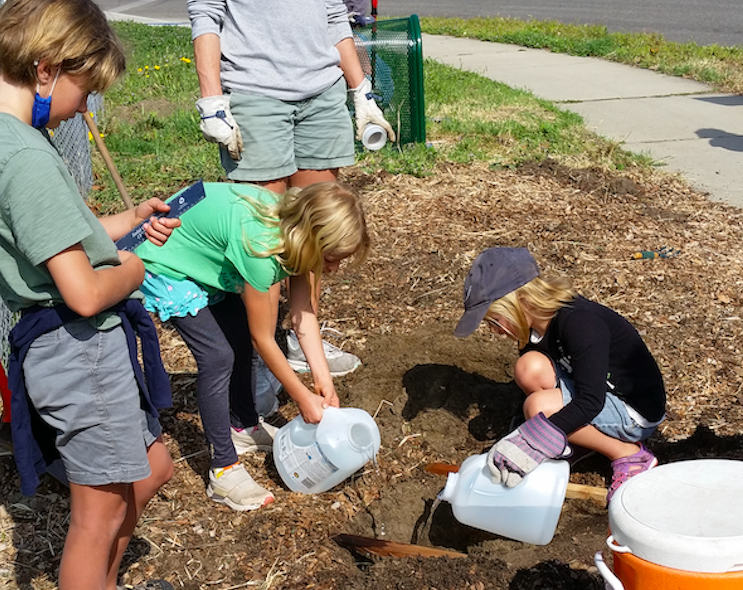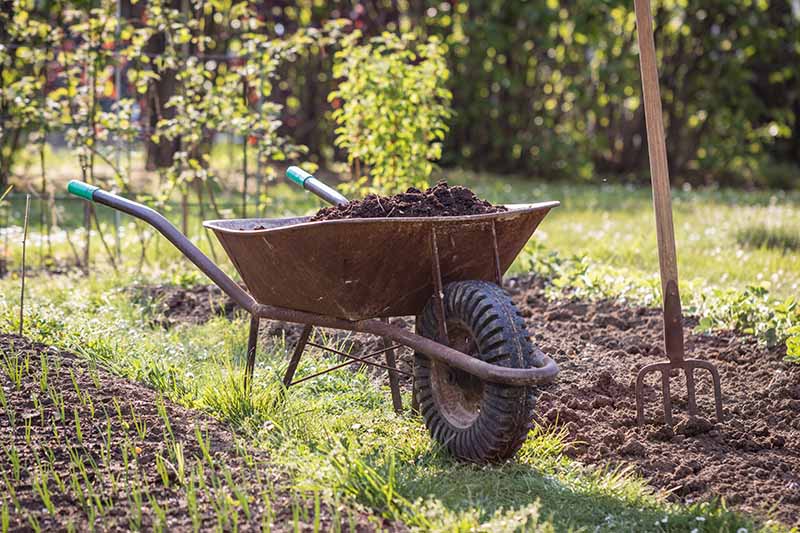Soil Health: Overview

Most people know that sun and water are essential in the success of their gardens. There’s a third, often misunderstood, superstar of successful gardening: good soil. A plant is only as healthy as its roots and their complex relationship to the diverse microbial world in the soil. Roots absorb water and nutrients from the soil but they also feed colonies of soil microbes that prepare and deliver food to the roots. Healthy soil is free of poisonous heavy metals or industrial toxins that suppress or destroy beneficial microbes.
As we prepare the Chandler/Pass site for our first gardeners, we are looking carefully at three soil health indicators:
(1) nutrient balance,
(2) soil structure that enables water infiltration and retention, and
(3) pesticide and herbicide residues.
Upcoming tests will identify problems and provide guidance for remediating them.

The best remedy to industrial toxics is the exact opposite: diverse and fecund soil biology (bioremediation). We need to supercharge the garden soil with organic amendments: composts, mulch, seaweed, fungi, bacteria and most of all, plant roots. Soil high in organic matter and diverse soil life will correct most problems, break down a number of chemicals and bind heavy metals.
Our soil improvement plan will include an immediate and ongoing infusion of organic matter. Pesticide and herbicide use will be limited to those products meeting CCOF/USDA organic standards along with the approval of garden members and leaders. Regenerative practices will be openly supported and shared with all garden members and the community at large. Healthy soil is the foundation of nutrient-dense food and a productive, healthy, and safe community. It’s all connected.
Soil Health: Nutrient content
Like people, plants need balanced nutrients to flourish. Commercial fertilizers typically emphasize only the N-P-K ratio in their products: nitrogen (N) stimulates leaf growth and is needed for photosynthesis; phosphorus (P) stimulates root growth; and potassium (K) regulates plant health and facilitates the plant’s use of water. But too much of one nutrient can cause a deficiency of another. There are also many micro-nutrients essential for plant health: calcium, magnesium, sulfur, iron, copper, vitamin B-complex, to name a few.

On April 1, 2022 we took soil samples at the Chandler/Pass site to be tested at Wallace Labs for nutrients, organic matter, and metals. Soil samples from four locations were collected and combined. Test results will be posted on the website as soon as they are available.
The test results will give us a snapshot of current soil conditions and include recommendations for soil amendments to optimize balance and diversity. General soil health will be improved by adding tons of compost and mulch. Specific deficiencies, imbalances, or pH extremes will be addressed directly with materials that offer the missing nutrients (banana peel for potassium, egg shells for calcium, etc.). This initial infusion of organic matter will begin the process of building rich and robust soils for our community garden.
Soil Health: Water infiltration and retention
The soil found at the Pass/Chandler garden is typical of the fast-draining, quick-drying, fine alluvial sands found in the San Fernando Valley. In fact, the valley could be compared to a sand lake but the water is underground. Plant roots can only absorb nutrients that are water soluble so when a soil dries out the plant dies twice: once of dehydration, and again of starvation.

Bare soil that has baked in the hot summer sun with little organic matter or moisture can become so hard and dry that it actually repels water, becomes hydrophobic. Dried bare soils often form mineral and microbial crusts, like a bread crust, so flash floods are common in barren dry lands.
A healthy garden soil absorbs water easily, spreads it around the roots and has enough organic matter to hold moisture so the plants get a nice long, slow drink of water. Building good soil is one way to maximize water during droughts and grow food with small sips of water.

We checked the water infiltration rates of the Chandler/Pass garden on April 1, 2022 to determine how quickly water is absorbed into the soil. The test involves digging holes approximately shovel width and depth, filling the holes with water once to saturate the soil, letting it drain completely, then filling the hole a second time and measuring how far the water level drops in an hour. Two test sites inside the fence absorbed water at 4 and 7 inches per hour. However, soil outside the fence that was covered by mulch for three months absorbed 14 inches of water per hour, a two to three-fold increase.
This rapid improvement in water infiltration is also an indicator of microbial growth, better air circulation, and water retention – the benefits of increased soil organic matter. Compost and mulch will be available to gardeners so they can build incredible soil.

We will also offer water conservation classes demonstrating dozens of techniques to use every drop. California’s mega-drought is not showing signs of letting up and gardeners need to be well tuned to seasonal changes, and long-term climate changes that effect water supplies. Working together with nature we can build a productive garden that wisely draws on our limited water resources.
Soil Health: Herbicide residue
While our community garden will strictly control future use of pesticides and herbicides, it is important to understand the impact of any lingering chemicals from previous pesticide and herbicide use. Herbicides and pesticides have been used in just about every landscape in our modern city. The active ingredients in these products can remain in the soil for months or even years. And even though public agencies are supposed to maintain records of the pesticides and herbicides used in our community (Emergency Planning and Community Right-to-Know Act of 1986), it can be a challenge to locate and obtain copies of these records.
In addition, the formulations and names of herbicides are constantly evolving to stay ahead of watchdog groups, enforcement agencies, toxicologists, medical science, lawsuits, and regulations. Because weed abatement is done by multiple contractors and agencies, there may be a number of parties who have applied herbicides at our garden site in the past: LADWP, the City of Burbank, or “lowest bid” contractors. One garden neighbor said herbicides have been applied to the Pass/Chandler garden once or twice every year since 1979, the year he moved into the neighborhood.
The soil samples taken on April 1, 2022 will be tested for heavy metals. Unfortunately, there is no simple or economical test that can determine what herbicides were used on the site in the past. In order to understand whether there are active chemicals remaining from previous herbicide use, we will perform a comparative germination test. It works like this: A gallon of garden soil is split in two. One of the two samples is mixed with activated charcoal which will absorb and/or bind with unknown herbicides. The other soil is not amended with activated charcoal. Rye grass is planted in the two soil samples as a quick germinating test species. If there is no difference in the germination rates, the chemistry has basically cooled down. If the germination rates are different, it can be assumed that some (unidentified) chemicals are still stunting growth.

This test only tells us whether rye grass is or is not affected. We’ll have to extrapolate results with other types of plants. If we determine that there are active herbicides remaining in the garden soil, we will bioremediate, or use microorganisms to consume and break down these environmental pollutants. Gardeners might also consider planting flowers or a cover crop their first season to allow organic processes to neutralize any active herbicides in the soil prior to planting food crops.
There are many excellent sources of information to learn more about the harmful effects of pesticides and herbicides.
https://calpirg.org/feature/cap/ban-bee-killing-pesticides
https://www.compostingcouncil.org/page/DigitalResourceCenter